Although we’re only a few weeks into winter, seed starting has already begun here on the farm. Our long, mild, growing season doesn’t give us a lot of time off.
Last year we were distracted through most of winter, and early spring, with bringing our first dairy goats to the farm, and sadly, due to my own lack of discipline, our tomato seeds were started late.
In addition to the late start, we chose to conduct a tomato grafting experiment last season which set our transplanting times back even further. Although the garden did eventually catch up, due in part to an extended run of warm weather in late autumn, we resolved that this year we’d get a head start on grafting.
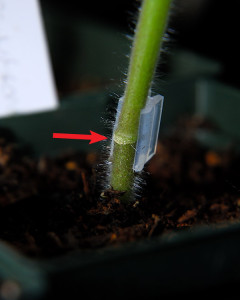
When grafting tomatoes to disease resistant rootstock, transplanting is delayed while the graft union heals
We were so happy with the results of our tomato grafting experiment that this year we will be grafting all of our heirloom tomato plants this season.
We’ll just need to factor in a little extra time into our sowing and transplanting schedule for grafting. So, as soon as our rootstock seed order arrives, we’ll be starting our first tomatoes in the greenhouse for 2013, so the plants will be large enough, and vigorous enough, to transplant by mid-late March. I will stay on track this season…I will…I will…I WILL!
As for the rest of the vegetable garden, last year we finally finished installing the last of the raised beds, which gives us more planting space, and will also make our crop rotation scheme more flexible from season to season.

Getting the last of our raised planting beds built, and installed, has given us much more planting space in the garden
The greatest constraint we have though is greenhouse space. It’s funny, we didn’t have a greenhouse prior to last season (don’t ask, let’s just say my living room, and kitchen, and vacuum cleaner, are all grateful that we finally installed one). However, after not having one at all, we’ve quickly realized that as much as we love our greenhouse, we really could use one that’s at least four times larger than the one we put up. This of course would be against county codes without permits, not to mention impossible with our steep terrain. But we can dream, can’t we?
So, instead, we have to make do with what we have for now, but the key to making the greenhouse work for us this season will be efficiency, staying organized, and on schedule.
Part of the greenhouse will be used for tomato grafting in the coming weeks, and part will also be dedicated to fruit tree grafting – for a longer period during the season, as the meadow voles had no shame last year and devoured the majority of our grafted fruit trees. Really. They’ve been getting so brazen, they even moved into the pots!

Last season we had a lot of losses of young grafted trees. The rodents defoliated the stems, and destroyed the roots
Lesson learned. Unless I can perfect my whack-a-vole technique, this year we’ll leave the young fruit trees in the greenhouse until they’re ready to be transplanted into at least 5 gallon containers, and then we’ll get them in the ground ASAP!
So between tomato and orchard grafting projects, this leaves significantly less space in the greenhouse for seed sowing this spring. That means no stalling, playing with baby goats all day long, while our transplants are crawling out of their pots, and the rodents are running amok in the orchard. Around here, while the farmer’s away, the voles will…oh, yes they will, don’t doubt it for a minute! If the voles aren’t misbehaving, the pocket gophers are more than willing to step up. Some days it’s a miracle I still have my sanity.
So, back to planting. What are we planting in 2013? This season some of our old favorites will be planted again, but we’re also planning to bring a few new (to the farm) varieties into the vegetable gardens.
Last season we had excellent results with a diverse collection of heirloom eggplants, and this year we’ll be planting them all again, except we’re replacing ‘Turkish Orange’ this season, which was quite bitter, with another heirloom ‘Casper’ instead.
Being a big fan of roasted root vegetables, we’re also going to plant a variety of rutabaga this year, ‘Collet Vert’. I know that some consider rutabagas to be more akin to cattle fodder than haute cuisine, but I think they’re an oft-overlooked garden crop. Roasted, they can be delectably sweet, so this season we’re finally going to make some room in the garden for them.
Another odd crop, not commonly grown in gardens, will be Salsify ‘Mammoth Sandwich Island’.
Salsify pairs well with turnips or rutabagas, and can simply be roasted or caramelized in dishes with other root vegetables. The mild flavor also goes well with mushroom dishes, and Salsify can even be grated to make Salsify fritters. Honestly, we’ve never grown Salsify before, in any of our gardens, and I rarely see it, or even think to buy it. Our raised planting beds should provide the ideal loose deep soil that Salsify needs, so we’re excited to see how it does for us this season, and look forward to using it more in the kitchen.
Speaking of root vegetables, some Japanese Minowase Daikon radish will also find its way into the garden this spring.
We’re still very much devoted to growing our red and green oakleaf lettuces here, but always game to try varieties we haven’t grown before.
We tend to stick to loose-leaf or romaine types, mostly, as they’re more forgiving of our occasional February heatwaves. This year I’ve decided to shake things up a little from our routine varieties though, and we’ll be growing a wider assortment of rather snappy sounding, and colorful, heirloom varieties this spring, including Cimmaron, De Morges Braun, Forellenschluss, Gentilina, and Sanguine Ameliore.
Our Corno di Toro peppers did so well for us last year, much better than ‘Lipstick’, ‘Tolli’s Sweet Italian’, and the ‘Quadrato di Asti Rosso’ peppers we’d grown previously, so we’re making more room for them this year.
Thinking about where some of this produce will end up, this season I’ve ordered some varieties specifically for their color. Both Zucchini Golden, and Crookneck Early Golden summer squash, will be planted because I honestly prefer the look of yellow summer squash in our Zucchini pickles, over the green varieties. The flavor isn’t really any different, it just looks more pleasing to the eye, and these pickles are so good that not making them is simply NOT an option!
For the winter squash we’re keeping Boston Marrow, Galeux d’Esyines, Musquee de Provence, and Greek Sweet Red.
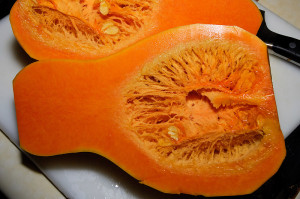
‘Greek Sweet Red’ is one of our favorite butternut varieties, both for color and flavor intensity, but yields have been lower than Waltham
As crazy as it sounds, just for this season, we’ll be dropping Waltham Butternut due to space constraints. Instead we’ll be comparing our current favorite, for flavor, ‘Greek Sweet Red’, versus another heirloom variety ‘Butternut Rogosa Violina var. Gioia’. We’re interested to see how they compare both on yield, and flavor. My only hope is that at least combined, their yields are as good as Waltham has been, as I use a LOT of butternut squash in our winter kitchen. Of course, if you read this blog very often, you likely already knew that, didn’t you?
For the first time here, we’ll be trying Queensland Blue, Winter Luxury, Sweet Fall, and Australian Butter squash as well this year, as we’re always on a quest to find a new favorite winter squash.
Another new addition, albeit not a particularly edible one, will be luffa gourds. We’re excited to have our own fresh goat’s milk this spring, and I expect we may have at least a little extra, so I’m hoping to dabble in a little soap making in my ‘spare time’. We already have honey and beeswax, and lots of ‘Provence’ lavender in the gardens, which will likely find their way into a few bars, but sometimes my hands need a really good scrub when I come in from the greenhouse, so I’m thinking of experimenting with making some scrubby luffa soaps too. No pressure, Lotus!
For a more comprehensive list of what we plan to plant this season, see here. In a future post I’ll get more into our sowing, successional planting, and crop rotation schemes. However, in the meantime, in the interests of not breaking the most important resolution I made this year – staying on schedule in the gardens – first I have some beet seeds to sow!
Are you planting anything new this year?

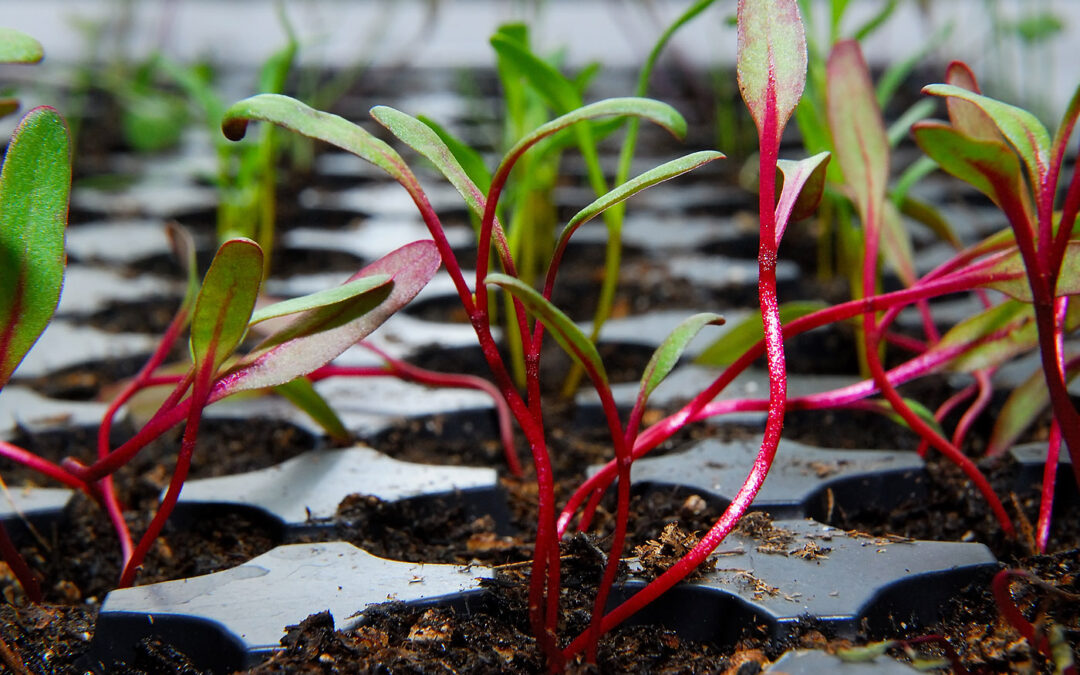
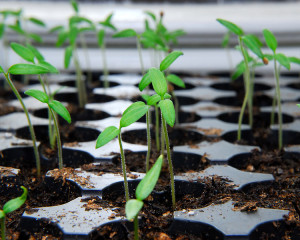
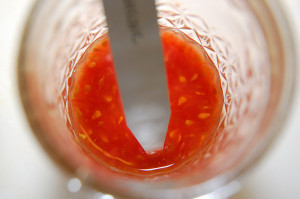
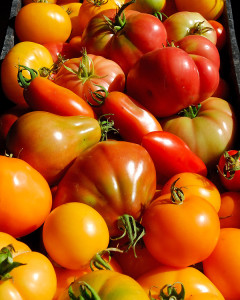

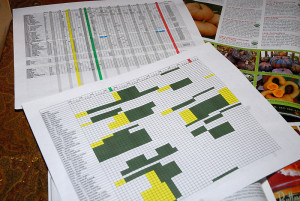


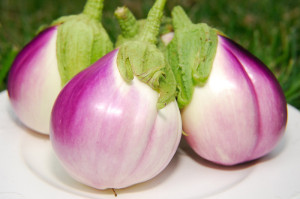
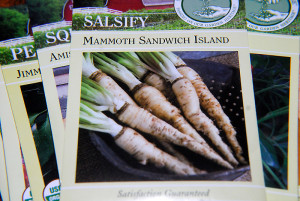
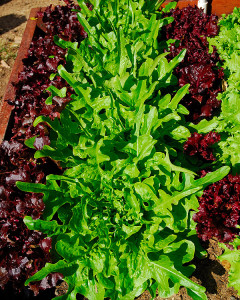
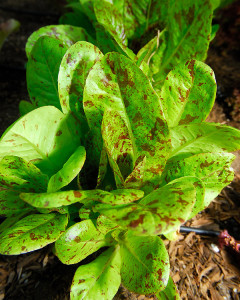
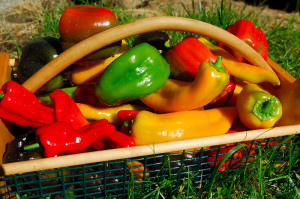


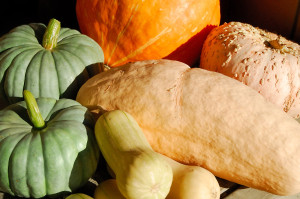

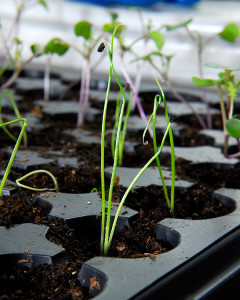







That long growing season is such a luxury! I’ll have to read your original grafting post again to see why you don’t grow your rootstock from seed too. As for planting something new, I always try at least one new thing in the veggie garden each year. I’ve got a small space for edibles and new things help when it comes to rotating crops (is everything in the brassica family?)
Would a new greenhouse table configuration give you more room? Two smaller shelves along the walls, then one in the middle (making two smaller aisles). If the center aisle is “too wide” now, that could be one solution.
Alan, we do grow our tomato rootstocks from seed, but we have to special order the seed. It’s a hybrid seed variety, and likely wouldn’t come true. Even if it wasn’t hybrid, as it’s the root end of the plant, it never is allowed to set flower, or fruit – hence no seed.
I think you’re right, almost everything is in the brassica family. It can be challenging putting together a ‘balanced’ rotation scheme 😉
I have considered adding a second shelf, above one of the existing shelves, but just at half depth, so it doesn’t shade out the shelf below. A little reorganizing is definitely in order in the greenhouse this season to help make the use of space more efficient!
How great that you can get planting already! I would love a greenhouse one day. I told myself I wasn’t going to start any veggies from seed this year after my terrible results last year, but I’m thinking I will try something this year. I know what I won’t be growing, but haven’t decided what I will try. For sure Kale and chard and spinach, they all did great last year.
Catherine, do you use a heat mat and a strong light source when starting seeds? If you’re struggling with good germination, a heat mat and grow light can make a LOT of difference! The heat mat should improve germination rates, and the grow light will help to produce much stronger seedlings, that are healthier at transplanting time.
I do use a heat mat and grow light. The part where it went wrong was probably putting things outside too early. It was so wet and cool last spring that most stuff withered away. This year I’m going to start a little later and be more patient before moving seedlings outside. And I’m looking for things that have a shorter growing season, so hopefully that will make a big difference.
Patience definitely helps when hardening off seedlings. I usually start with a few hours in the mornings, and then bring them back in. Somewhere partly sunny at first so the tender new growth doesn’t get shocked. Good luck!
I always admire your organized and well studied approach to your farm, but I laughed when you said your greenhouse is too small! Isn’t that the way things so often are. We get what we want, then realize we really need a little more! Our dreams are ever expanding…The homemade soap sounds wonderful, along with the home grown loofah. My hands could use both!
It is always the way. When we were first wanting a greenhouse our overall goals weren’t as…ambitious 😉 That’s ok though, like Alan suggested, I can probably rearrange things a little to make better use of the space, and staying organized will help, as I’ll get the transplants out on time this year, which will free up space for the next round of seeding 🙂
All your vegetable plants look so yummy! I am surprised that you didn’t have a greenhouse until recently. I guess I assumed that you would have had a greenhouse for a long time. My hubby bought a portable greenhouse last summer, so this spring will be my first experience with one. I’m just a little excited! 🙂
We had a lot of other infrastructure to get in place before we could even install the greenhouse, including a rather large retaining wall to curb erosion behind where the greenhouse was ultimately installed. We just had to be a little creative in the meantime 😉
I was so excited about how exotic and mysterious the Salisify plant was when I planted some seeds in my Berkeley, CA garden two years ago. Once it sprouted, it turned out that it was actually the mysterious “weed” that I’d been fighting in my front yard for the prior three years. That stuff is hardy, make sure to pull it before it flowers or you’ll have plenty for free, even in the driest clayey soils (I was pulling them in spots that had no supplementary water all year round).
I love your blog, thank you for letting a city girl live vicariously through you!
Thank you Natasha, glad you enjoy our ramblings! It’s funny, you’re the second person since I posted to this to tell me about their battle with the “weed” salsify! Sounds a little like our Mizuna here. I let some bloom in late winter two years ago, to provide forage for the bees, and now it sprouts all over the garden! 😛 I think I’ll definitely avoid letting Salsify go to seed, unless the seed heads are contained for seed-saving purposes!
Oh Clare you sure have planned 2013 so well. I’m a list lover though for now all my lists haven’t made the pen to paper stage yet. I’ve never heard of Salisfy before – it looks quite similar to a Parsnip – do they taste alike?
It does look very similar to parsnip! Like parsnip, it does have a very distinctive flavor, but it’s very different from parsnip. Salsify is also known as ‘oyster plant’, as many liken the flavor to that of oysters. Others perceive the flavor to be more similar to an artichoke. I think it’s maybe somewhere in between. Definitely unique. We will be growing two varieties of parsnip too. Parsnip isn’t as popular here as in the UK, but I love it, especially roasted!
I’m jealous you’re able to start planting seeds already. I have to wait until March at the VERY earliest around here. Like you I actually love rutabagas, had trouble with brown heart this year but I’ve beefed up the soil so hopefully we’ll have a good crop next year. My planting won’t vary much this year but my cousin did send me a number of new tomatoes to try so there will be new flavours again – we’ll see how many plants I can cram in.
That’s funny, you sound like me, “I’m sure I can squeeze in just a few more plants…” 😉
Happiest of New Years Claire! May you have bountiful harvests throughout 2013! Happy seedlings!
Thank you, and Happy New Year to you too, Carol! 🙂
Clare I just saw the vole damage in my garden so far this winter….grrrrr!!! I want a cold frame for next fall myself. I will be planting cukes this year for pickling. Not sure what else I am planting new as I have not put together my garden plan yet…but I bet there will be more.
Loving what you are doing with your tomatoes.
Donna if you’re having vole trouble, even when you get a cold frame, I recommend lining the bottom with hardware cloth or gopher wire (assuming the bottom is just open to the soil). I can’t believe the maze of tunnels I’ve found around the edges of our raised beds. Fortunately, our beds are lined with wire, but now I’m thinking of adding some sharp stone to all the paths between the beds to discourage those wretched rodents even further. That, or we need at least 3 barn cats on patrol out there. Grrr is right! 😡
Clare, I am always amazed by how much you accomplish. Just reading part of your to-do list leaves me feeling like I need to take a nap! 😐
There are days I feel like I could use a nap! This time of year really does get to be ridiculously busy, with fruit tree pruning, prepping for goat kids, and getting the seeding started. Hopefully things will slow down a little in late summer 😕
How amazing it is to grow such a huge variety of food. The greenhouse and the raised beds are impressive and it never seems enough room, though! 🙂
We do like to have the variety, but we also plant a variety of some veggies as insurance. As we plant so many heirloom varieties, that are generally speaking less disease/pest resistant than some hybrids, it’s always possible that a particular cultivar may fail during a growing season. By mixing things up a little we hope that even if one type of lettuce or squash, for example, didn’t perform well, one of the varieties will do well, so we’re not out entirely.
That’s quite the variety! Oh, how I would love a greenhouse. One of these days!
I think you and I have the same Mortal Enemy! At least I only have a little lot to keep the voles out of. I can’t imagine trying to keep their little grubby paws off an entire farm!
We can’t patrol the whole farm. Fortunately, outside the deer fence the coyotes and bobcats can do their share of vole and gopher control. Inside the fence though, the little beasts manage to gain a stronger foot-hold, so we have to step up as surrogate predators. I’m not I’m as efficient at catching rodents as a bobcat, but I’m trying! 😛
Looks like you’re going to have a great veggie garden this year! You’re reminding me that I should probably start my seeds soon too. Looking forward to seeing how your veggies do this year.
Sometimes I wish I lived in a colder climate, then I wouldn’t have to think about sowing seeds for a few more weeks, but on the other hand, I really can’t complain. Usually by May the garden really gets producing, so I’m excited to see how the garden does too this year! 🙂
Zooooooooot I look around the Blotanical site and see nature galloping away. Some fabulous images here.
This time of year, if you blink, there’s no question that Nature gallops away…without you!
I know exactly what you mean about needing a bigger greenhouse! But I had to laugh, because my first season, I, too, used our house/basement/garage as my “greenhouse.” Then, I moved on to a few little pop-up greenhouses, then hubby bought an 8 x 10 real greenhouse as a birthday present for me–and finally, we installed a 10 x 20 commercial greenhouse in our backyard. Still–even with two “real” greenhouses, I never have enough room!
Cheers to you for your organization. I once again will try to grow too many plants in too little room. Sigh. Good luck!
Glad I’m not the only one that feels cramped! We made it to the 8×12 greenhouse, but in a perfect world, it would be MUCH larger. Sadly, if I’m honest, I have to admit that my living room is doing double-duty again this season…much to the chagrin of my vacuum cleaner 😉
You are always so organized, and I need that mantra of remaining on track this year, too. ‘I will, I will, I will.’ 🙂 I have seen some vole activity, and I need to go out there and address it now before it gets worse. Pesky critters.
I have to stay on track (she says, ignoring the fact that she’s already a week behind on sowing lettuce). As for the voles, it’s war…and thus far we’re losing, but my viking genes aren’t willing to just let me sit by while they feast at my expense…I’m working on my whack-a-vole technique, and hopefully this season we’ll gain the upper paw!